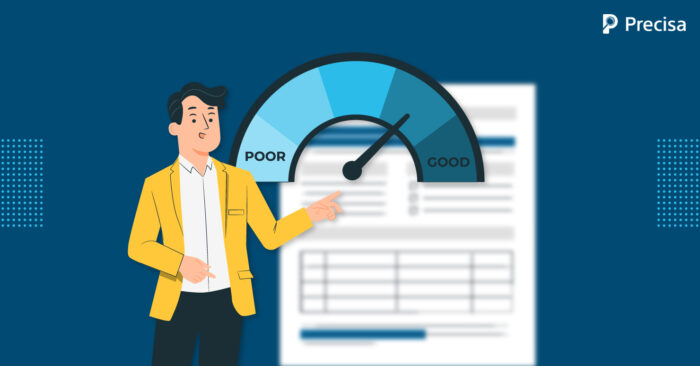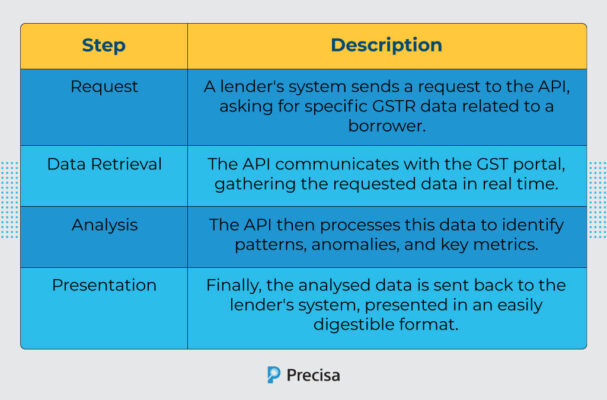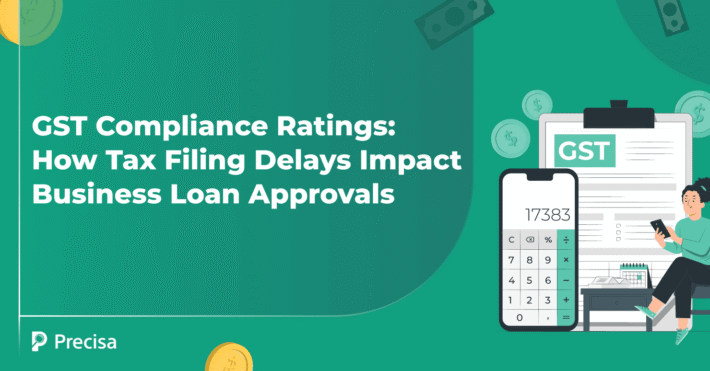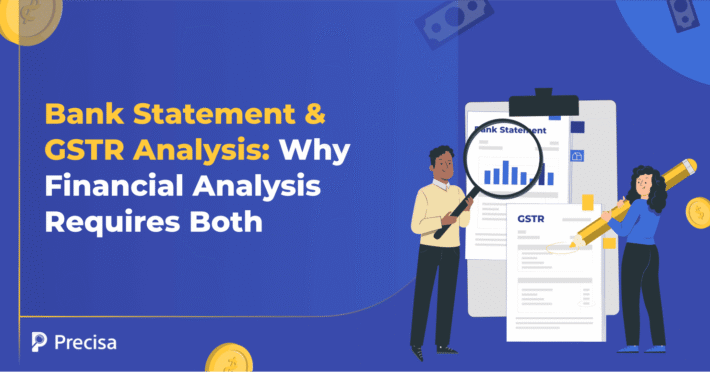How APIs for GSTR Analysis Help Assess Credit Risk
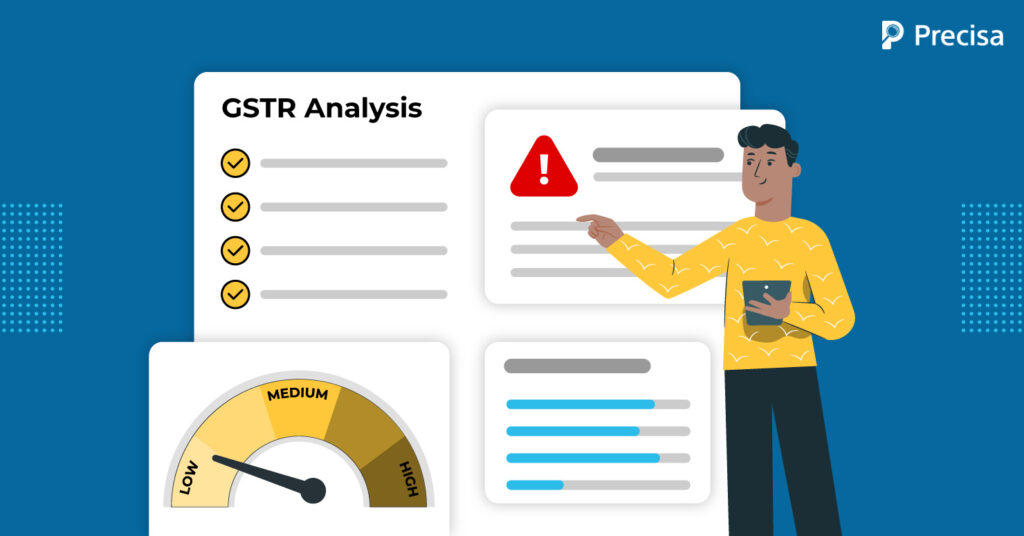
A mere decade ago, instantly delving into a borrower’s financial history would have been considered sorcery. Today, however, APIs for GSTR analysis make this a daily reality. The APIs (Application Programming Interface) effectively ensure tracking of GST compliance, pinpoint errors, and auto-generate essential reports.
Imagine a cutting-edge tool that not only facilitates error detection in GST returns but also integrates seamlessly with accounting systems, automating the once-tedious preparation and filing process.
Curious to know how all these become possible? Let’s navigate deeper into the myriad functionalities of these APIs.
Role of GSTR for Credit Risk Assessment
Goods and Services Tax Return (GSTR) is more than just a tax document. It’s a transparent mirror of a business’s operations. Through GSTR, lenders, government officials, etc., can gauge a company’s sales and purchase activities.
For instance, consistent monthly sales figures signal a stable revenue stream, while erratic patterns might raise eyebrows. Similarly, timely GSTR filings indicate compliance and business discipline. In essence, GSTR becomes an indirect testimony of a business’s financial character.
What are APIs for GSTR Analysis?
APIs for GSTR Analysis are digital connectors that seamlessly extract and process Goods and Services Tax Return (GSTR) data. Instead of manually scouring government portals, these APIs instantly fetch and interpret GSTR details.
For example, a lender can, with a simple command, obtain a business’s monthly GST transactions, understanding revenue and compliance at a glance.
How APIs for GSTR Analysis Work: An Overview
How APIs for GSTR Analysis Impact Credit Assessment
With APIs for GSTR analysis, lenders wield a powerful tool that swiftly deciphers a borrower’s financial narrative. Let’s look at some more benefits:
1. Real-time Insights
In the world of finance, time is as important as money. Immediate access to GSTR data ensures lenders aren’t left in the dark, and they don’t have to wait for crucial insights. Consider a scenario where a lender hesitates due to delayed data, only to miss out on a borrower who later flourishes with a competitor’s support.
2. Detecting Anomalies with GSTR Analysis
GSTR analysis isn’t just about seeing the numbers but understanding their story. APIs are adept at highlighting inconsistencies in GSTR filings—whether it’s unusual spikes in transactions or patterns suggesting evasion. Spotting these anomalies is critical.
For instance, a business showing high sales but low tax payments might be concealing some transactions. With API-powered GSTR analysis, lenders can trust the data’s integrity and ensure that they’re backing credible borrowers.
3. Creditworthiness
Assessing a borrower’s ability to repay loans or their creditworthiness is foundational in the lending arena. It’s akin to a trust meter: the higher the creditworthiness, the more reliable a borrower appears. Traditionally, lenders would comb through heaps of paperwork, looking for patterns and markers.
GST analyser tools like Precisa simplify this entire process.
By swiftly analysing bank statements, Precisa displays the transaction patterns. It often translates this through the Precisa Score—a concise metric reflecting a borrower’s financial health. Lenders can quickly make decisions by discerning an applicant’s repayment capacity just by looking at this score.
4. Advantageous for Lenders
Lending, in its traditional form, can be a minefield of manual checks, delays, and human errors. APIs for GSTR analysis streamline this. Lenders save invaluable time, bypassing the tedious manual review of GSTR filings. Further benefits include:
- Enhanced Decision Speed: Swift processing means faster loan approvals or rejections.
- Cost Efficiency: Reduced manual labour can lead to notable cost savings.
- Consistency: Automation ensures uniformity in the assessment process across all applications.
- Scalability: Lenders can handle a larger volume of applications without expanding manpower.
- Real-time Updates: Stay updated with the latest financial data, ensuring relevant decision-making.
- Reduced Fraud Risks: Automated checks can better detect discrepancies and red flags.
5. Empowering Borrowers
GSTR analysis isn’t just for the big banks and lenders. Think of it as a mirror for borrowers, reflecting their financial health. When borrowers get a peek into what lenders see, they can spot and fix any financial hiccups ahead of time.
Think of a business realising its sporadic GSTR filings might look bad, prompting them to maintain better consistency. Informed borrowers are better equipped, turning the loan application from a game of chance into a strategy.
Here’s how borrowers benefit:
- Transparency: Borrowers see their financial story as lenders do, fostering a clearer self-understanding.
- Proactive Management: Identifying potential issues lets borrowers correct them, bolstering their appeal.
- Informed Decision Making: Knowing one’s financial health guides smarter borrowing decisions.
- Enhanced Credibility: Consistent and clean GSTR filings signal reliability and trustworthiness to lenders.
Final Thoughts
APIs for GSTR analysis help you cut through the clutter and enable strategic decision-making. It offers a direct route to real-time, accurate data for lenders.
This means no more guesswork! You get a clear shot at understanding a borrower’s true financial standing.
Ready to upgrade your credit assessment game? Elevate your financial analytics with Precisa GSTR Analyser. Beyond just GSTIN verification and the Precisa Score, you’ll find a suite of features crafted for today’s finance needs: real-time GSTR analysis, bank statement insights, and seamless account aggregator integration.
Financial institutions eyeing flow-based lending and businesses keen on refining their GST processes will find unmatched value in Precisa.
Integrate Precisa’s analytics into your system seamlessly with our APIs for a swift and secure user experience.
The best part? Taking the first step with Precisa won’t cost you a dime.
Sign up and unveil its power today!

